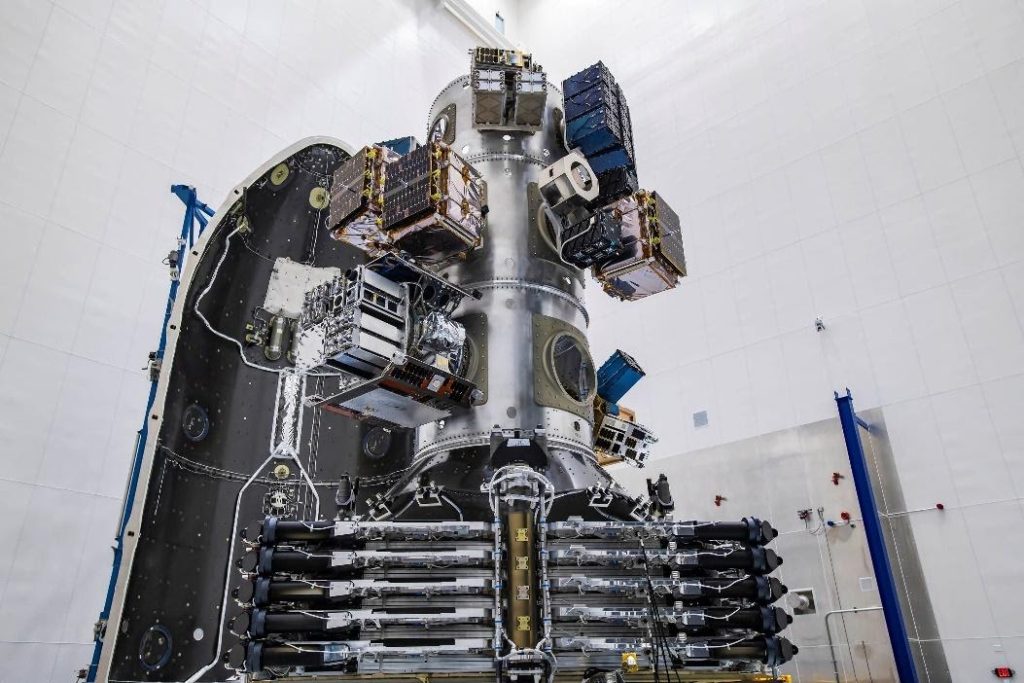SpaceX launched a total of 143 commercial and government satellites into space, breaking the record for the most spacecrafts ever deployed on a single mission.
The Transporter-1 launch, which lifted off on January 24th from Cape Canaveral Spaceforce Station in Florida, was also the first of the company’s dedicated rideshare missions.
The Smallsat Rideshare Program, which was announced in 2019, aims to provide small satellite operators with competitive pricing and increased flight opportunities on board of SpaceX’s launch vehicles.
For this launch, the satellites were launched aboard the same two-stage Falcon-9 rocket which was used for four missions last year, including the Crew Dragon Demo2 mission in May 2020.
After accelerating the payload through the Earth’s atmosphere and into orbit, the Falcon 9’s first stage (bottom half of the rocket) was released and made a smooth touch down landing on Space X’s unmanned drone ship “Of course I still love you” on Earth. It was the 73rd recovery of a first-stage booster for SpaceX.
The two fairing halves, which compose the nose cone used to protect the payload of the rocket, were also successfully recovered after a splashdown in the ocean.
The payload for the Transporter-1 mission included satellites from various companies and institutions around the world.
The purposes for these satellites vary from communications services and weather and vessel tracking services to radar imaging and scientific research.

The payload also included 10 of SpaceX’s own Starlink satellites, the first in the constellation which will operate in polar orbits.
The Transporter-1 mission came just four days after Space X’s 17th batch of Starlink satellites was delivered into orbit on January 20th. The main aim of the Starlink programme is to offer internet access from virtually anywhere on the planet, including rural areas.
For this to work, the service relies on thousands of small satellites in low Earth orbit which will be able to transmit fast internet signals down to Earth.
At the time of writing, SpaceX had already launched just over 1000 Starlink satellites and plans to launch up to 60 more with every Falcon 9 flight.
The company is currently delivering an initial beta service of the Starlink internet access. The ambition is to continue expansion to near global coverage of the populated world in 2021. However, this plan has been met with some concern, particularly among astronomers who worry that the satellites could obstruct their vision.
In June 2019, the International Astronomical Union warned that satellite constellations will have “a negative impact on the progress of ground-based astronomy, radio, optical and infrared, and will require diverting human and financial resources from basic research to studying and implementing mitigating measures”.

One way in which SpaceX is addressing these claims is by using a dark, anti-reflective coating on some of its newer Starlink satellites.
Of course, as more and more satellites are orbiting around Earth, keeping space clean needs to be another priority for SpaceX’s satellites.
The Starlink satellites are equipped with an on-board propulsion system which helps the deorbit over the course of a few months. If the system becomes inoperable, the satellites burn up in the Earth’s atmosphere within one to five years.
Slots for future missions of the Smallsat Rideshare Program can be pre-booked by governments and organisations on the SpaceX website, costing $1M per 200kg for a launch to Polar Sun-synchronous orbit, a low earth orbit passing roughly over the Earth’s poles.

